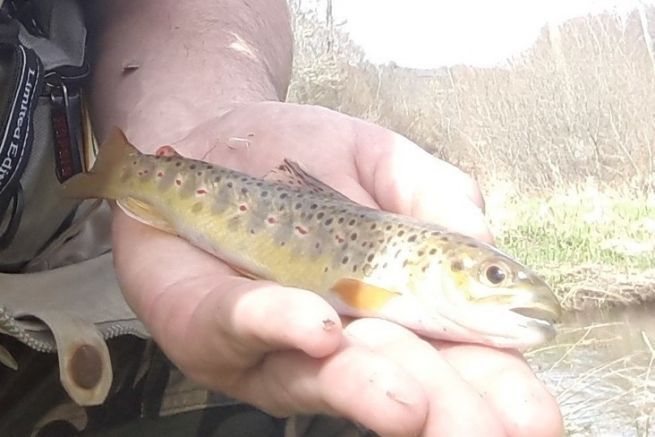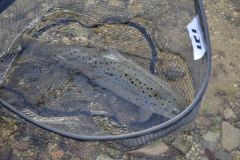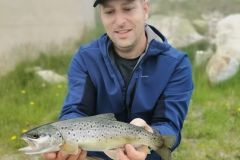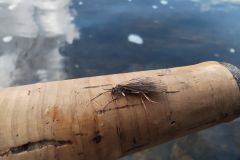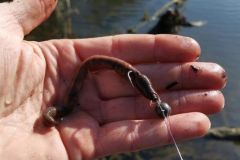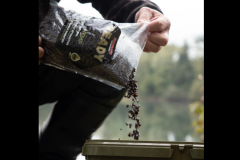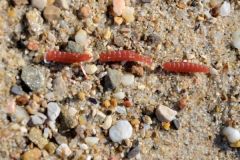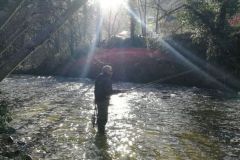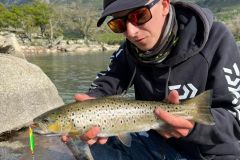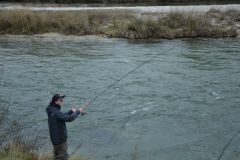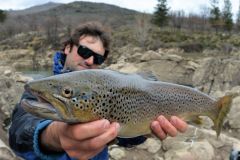It's all in the ballast
There are many ways to place ballast on a toc line. Increasingly, ball weights are being used, rolling along the bottom and providing a slow, perfect drift. This practice comes to us from our Italian neighbors and is used mainly on large rivers.
Clearly, this technique is best used in fairly linear areas with a fairly fine bottom substrate, as the log can roll along the bottom as it wishes in a natural way. Care should be taken to select the weight according to current, depth and bait size, as the bait will pull more or less on the line and therefore require an appropriate ballast to stay close to the bottom.
The ball should be checked regularly for its ability to run flush with the bottom. In the event of clogging at the ball hole, the line and leader may twist and rapidly become uncontrollable.
Bypass mounting is simple and highly functional. It can be modulated and is suitable for the vast majority of prospecting positions. In general, it provides a very natural presentation of the bait and allows the bait to pass flush with the bottom even in strong currents. Depending on the current, one or two ashy lines can be removed or added to avoid making the rig unnecessarily heavy.
Be careful with your drift, because if it's too slow, it's no longer natural. You need a line drifting at the same speed as the current to seduce these fario ladies who observe before seizing the bait. A little thought and observation are needed to set the right ballast and be ready for the first passage.
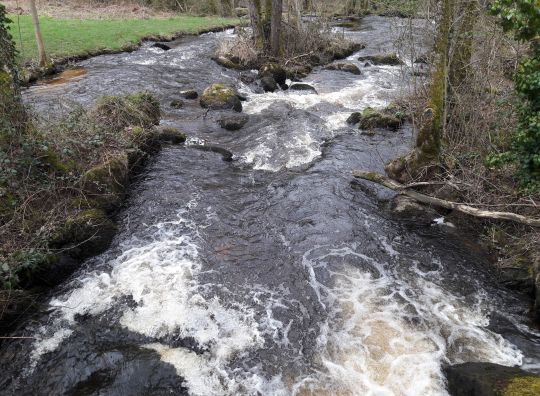
The different assemblies
The set-up for fishing with a rolling log is ultra-simple. It allows you to roll your line over large gravel pits and tempt trout on the prowl. From time to time, you'll need to stop your line, raise it slightly and continue drifting.
A 3.90 m toc rod, a 3 to 10 gram ball, a 16-centime leader, a single hook of different sizes depending on the bait, rolling, 18/100 line body and a line leader if necessary, this is the basic fishing kit.
Place a round ball weighing from 3 to 10 grams on the line body coming from the rod, depending on fishing conditions. It must slide perfectly over the line to allow the ballast to circulate smoothly. Before tying a rolling line with a universal knot, place a soft pearl to avoid damaging the connecting knot. Then install the leader.
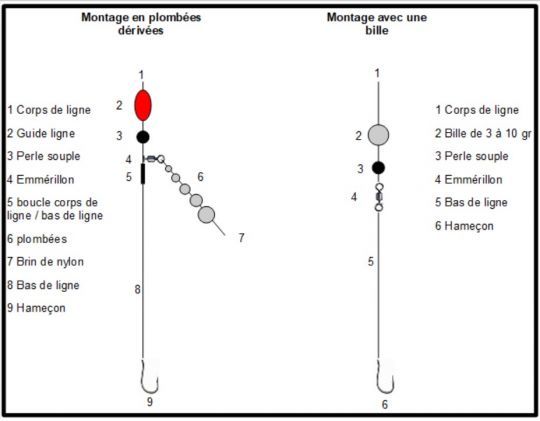
To save time at the water's edge, you can prepare the rig for trolling with a lead sinker in advance. On your 14 to 20/100 line body, slip a small rolling line (n°12 or 14), then place a soft pearl to act as a stop. Make a small loop at the end of the line body to stop the rig.
The first part of the rig is ready, all that's left is to place a leader chosen according to the bait. The leader should be 2/100 smaller than the line body. The last operation is to place the by-pass ballast. Attach a 16/100 nylon about 10 cm long to the free ring of the rolling line. Tie in 3 to 8 different-sized rat-tails in ascending order.
Remember not to over-tighten the ashy leads placed in the drift, as in the event of snags they will slide over the nylon to free your line. The closer the sinkers, the slower the drift.
